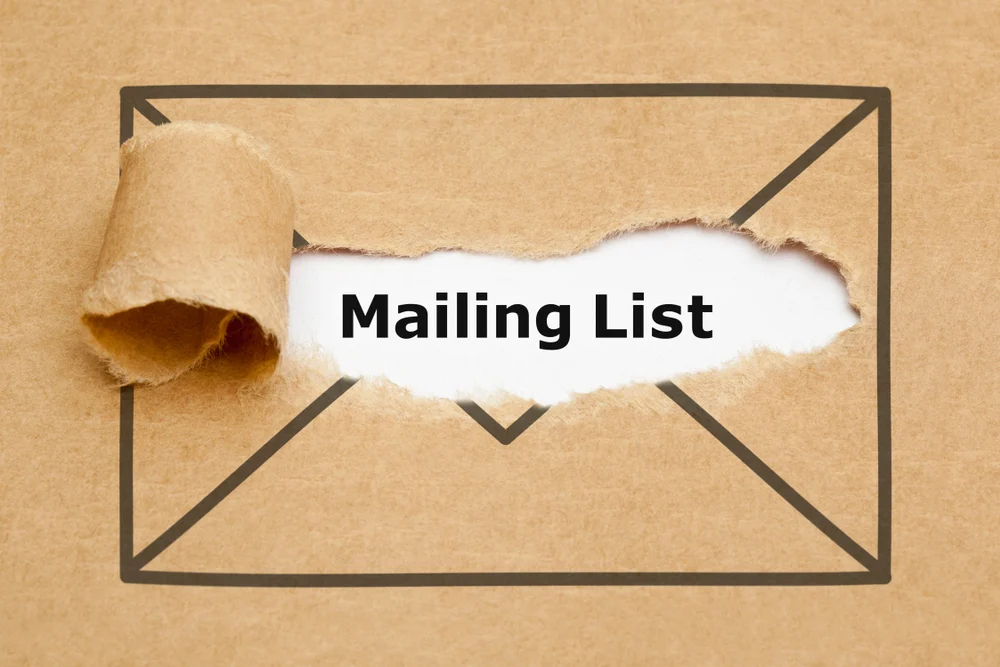
Engaging with the appropriate audience at the appropriate moment is crucial in the competitive business environment of today, particularly for small and mid-sized enterprises. Mailing lists are useful for that. The foundation of every outreach strategy is a mailing list, regardless of whether you’re planning a newsletter, postcard drop, or direct mail campaign.
However, how does a mailing list operate and what is it exactly? Let’s have a look at it.
A mailing list is a compilation of contact details, often names and physical postal addresses that are used to distribute offers, bulletins, announcements, and promotional items by email or direct mail.
To put it simply: It is a list of specific individuals or companies that you wish to contact with your advertising.
The practical operation of mailing lists is as follows:
Either you buy or rent a targeted list from a vendor, or you gather client information on your own (from information about purchases, online forms, etc.).
Your list may be arranged by region, sector, demographics, past purchases, or other pertinent factors.
You create, print, and choose the best time and location to distribute your marketing materials (such as flyers or postcards) based on the segmented list.
A business like Print Mail Direct uses your mailing list to send out the mailings via the USPS, utilizing economical methods like bulk mailing or EDDM (Every Door Direct Mail).
Certain businesses include tracking capabilities to keep an eye on consumer feedback and delivery rates, which may help you enhance subsequent campaigns.
| List Type | Description | Ideal For |
| Customer List | Names/addresses of existing customers | Loyalty campaigns, referral programs |
| Prospect List | New leads based on demographics or interests | New product launches, awareness campaigns |
| Saturation List | All households in a specific ZIP code | Local business promotions, grand openings |
| Business-to-Business | List of local businesses by industry, size, or revenue | B2B services like cleaning, logistics, etc. |
Here are some simple methods to begin creating a strong list if you’re new to direct mail marketing:
You may export addresses from your order forms, POS system, or CRM.
To gather addresses willingly, use promotions or website sign-up forms.
Print Mail Direct provides lists that are highly targeted and vetted by:
Eliminate address errors, duplication, and out-of-date addresses to prevent waste and undelivered mail.
A well-targeted mailing list means:
Regardless matter whether you’re sending out newsletters, promotions, or appointment reminders, the success of any campaign depends on the calibre of your list.
| Stat | Insight |
| 90% | of direct mail is opened, compared to only 20–30% of emails. (USPS, 2023) |
| 70% | of consumers say direct mail feels more personal than digital marketing. (MarketingProfs, 2024) |
| 4.9% | average response rate for house mailing lists (vs. 1% for email). (DMA, 2023) |
At Print Mail Direct, we help businesses like yours not only create accurate and responsive mailing lists, but also design, print, and deliver your campaigns seamlessly. Whether you need a local saturation list, a business contact list, or help with Every Door Direct Mail (EDDM), we’ve got your back — from strategy to mailbox.